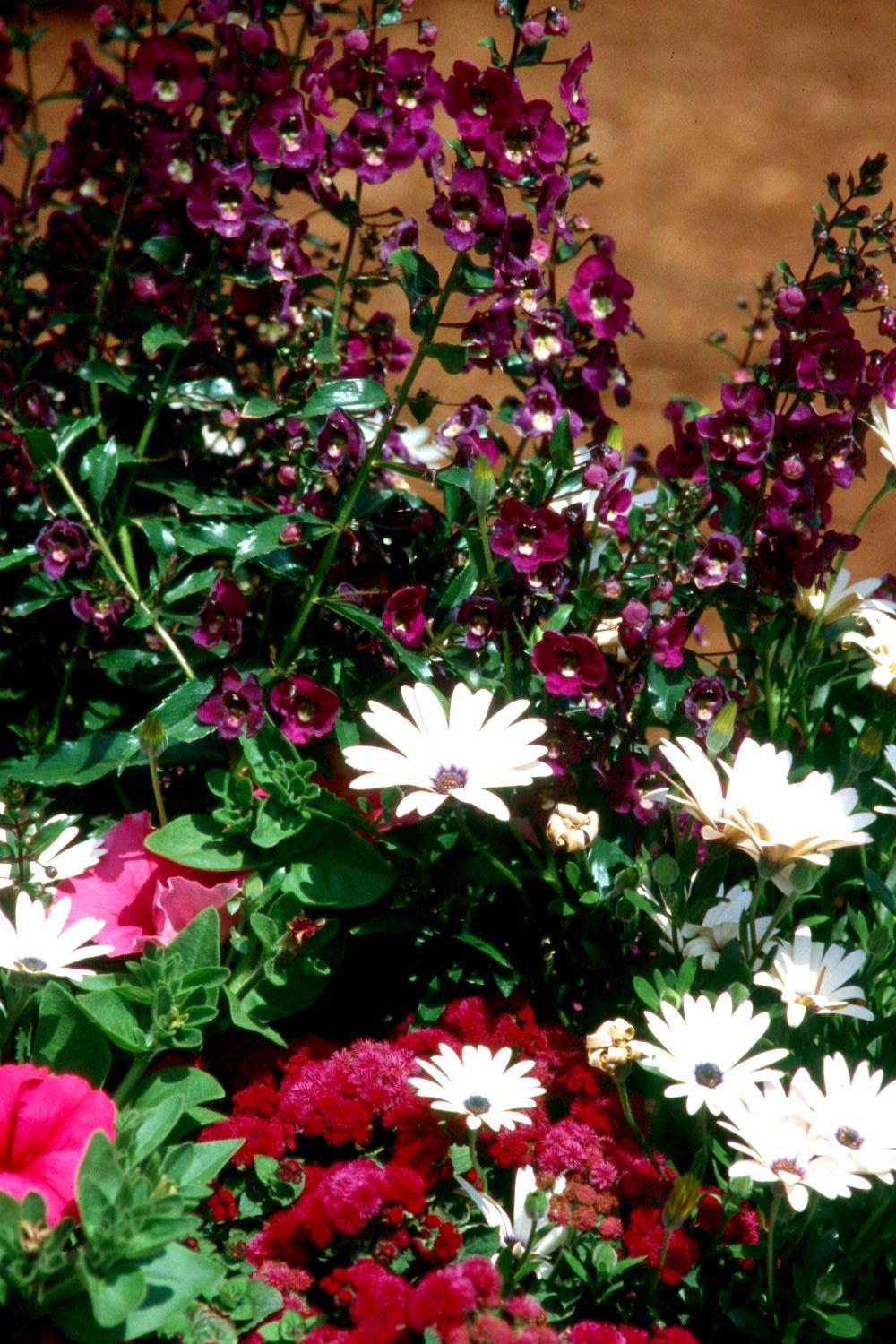Information Possibly Outdated
The information presented on this page was originally released on April 28, 2003. It may not be outdated, but please search our site for more current information. If you plan to quote or reference this information in a publication, please check with the Extension specialist or author before proceeding.
Find new angelonia varieties this spring
By Norman Winter
MSU Horticulturist
Central Mississippi Research & Extension Center
If I had to list the best flower introductions of the last 10 years, I might have to put angelonias at the top. It seems like it was only yesterday when I saw my first ones in the median of downtown Raymond. Then there was the introduction of Hilo Princess, a Florida Plant of the Year, and a few obscure varieties.
Today the world is changing as everyone is introducing angelonias, and they all look good. Before I discuss these varieties, there may be a few of you who do not know this wonderful plant. They are related to snapdragons and, in fact, many tags now read "Summer Snapdragon." Believe me, these flowers are definitely from the heat-loving side of the family.
The 30-inch-tall, spiky flowers of the angelonia are a welcome sight in the world where round flowers seem to dominate. The texture of the plant is a joy to behold. One thing that surprises me is that the price of angelonias is really a good value.
Plant them in well-drained, well-prepared beds rich in organic matter. Choose a site in full sun for best flowering. It is hard to believe that a plant in the snapdragon family relishes our summer heat and humidity.
Once established in the bed, angelonias seem to have remarkable drought tolerance. This is particularly true in organic-rich beds where a layer of mulch has been added. Pay attention though, because if we should go through a prolonged dry spell, supplemental irrigation would be necessary. Please do not stick this wonderful plant in tight, cement-like soil.
A light monthly application of a 2-1-2-ratio fertilizer, such as a 10-5-10 with minor nutrients, is all this plant needs to keep blooming. The bloom period is really long, and when it does want to cycle, it responds well to trimming back with a pair of pruning shears.
The angelonia will be treated as an annual most years, except in south Mississippi. However, they have come back three out of five years at the Truck Crops Branch Experiment Station in Crystal Springs. The poorer the drainage, the less likely they will return.
When angelonias bloom, they make you think they would be at home in a cottage-like garden. They are not as tall as the larkspur, but they give a sense of belonging in that style of garden. They look good with New Gold lantana or planted in drifts adjacent to black-eyed Susans. The white and pink varieties look awesome planted in front of tall, purple coneflowers.
A couple of years ago, Ball FloraPlant introduced the AngelMist series with deep plum, richer pinks and purples, and a better white. These have also been virus indexed, meaning they are virus-free.
New this year from Proven Winners is the Angel Face series. In Walt Disney World trials, these did exceptionally well. In my garden it seemed the flowers were larger.
From the Goldsmith/Ecke partnership this spring is the Carita series, which includes several colors. They have the appearance of being more compact, yet produce flowers in larger quantities.
Regardless of the angelonias you choose, you can rest assured you are getting one of the best in new flowers. Look for angelonias now at your garden center. I feel confident you will fall in love with this plant like I have.


